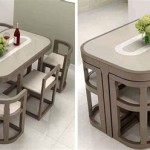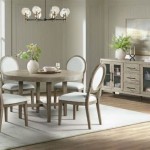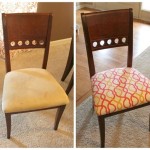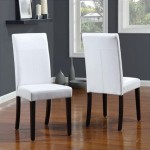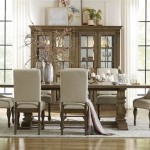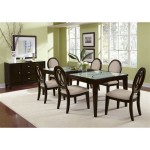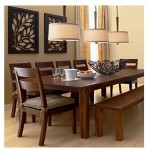Living and Dining Room Interior Design: A Comprehensive Guide
The living and dining room are often considered the heart of the home, serving as spaces for relaxation, entertainment, and shared meals. Achieving a cohesive and functional design for these areas requires careful consideration of various elements, including layout, color palettes, furniture selection, lighting, and accessories. Effective interior design planning optimizes space, enhances aesthetics, and ultimately improves the overall living experience.
This article provides a comprehensive overview of key principles and considerations for living and dining room interior design. It will explore aspects such as spatial planning, design styles, furniture selection, color strategies, lighting solutions, and the incorporation of decorative elements to create harmonious and inviting spaces.
Understanding Spatial Planning and Flow
Spatial planning is the foundational element of any successful interior design project. It involves analyzing the existing dimensions of the living and dining areas and strategically arranging furniture and accessories to maximize usability and create a logical flow. Before making any design-related decisions, it's crucial to assess the room's architecture, including the placement of windows, doors, and any structural constraints, such as columns or load-bearing walls.
The primary goal of spatial planning in living and dining rooms is to facilitate comfortable movement and interaction. In the living room, this involves considering the placement of seating arrangements relative to focal points like fireplaces or entertainment centers. The distance between seating and the television should be appropriate for comfortable viewing. Traffic patterns should be considered, ensuring that walkways are clear and unobstructed, allowing easy passage between different areas of the room.
For the dining room, the size and shape of the dining table are paramount. The table should be appropriately sized for the space, allowing ample room for diners to move around it comfortably. A general rule of thumb is to leave at least 36 inches of clearance between the edge of the table and any walls or furniture. The placement of the table should also consider the proximity to the kitchen, ensuring easy access for serving and clearing meals.
Open-concept layouts, where the living and dining areas are integrated, require a cohesive design approach. Defining the boundaries between these spaces can be achieved through the strategic placement of furniture, area rugs, or changes in flooring. For example, a large area rug can delineate the living room seating area, while a different flooring material can visually separate the dining space.
Exploring Design Styles and Aesthetics
The choice of design style significantly influences the overall aesthetic of the living and dining room. Selecting a design style that aligns with personal preferences and the architectural style of the home is crucial for creating a harmonious and cohesive space. Various design styles offer distinct characteristics and visual elements.
Traditional design often incorporates rich colors, ornate details, and classic furniture pieces. Think of dark wood furniture, patterned fabrics, and traditional artwork. In contrast, modern design emphasizes clean lines, minimalist décor, and a neutral color palette. Furniture is often sleek and functional, with a focus on simplicity and the absence of excessive ornamentation.
Contemporary design is often confused with modern design, but it represents more of a constantly evolving reflection of current trends. It can incorporate elements from various styles, emphasizing comfort and functionality. A contemporary living and dining room might feature a mix of textures, unexpected color accents, and furniture with flowing, organic shapes.
Scandinavian design prioritizes functionality, simplicity, and natural light. Light wood tones, neutral colors, and natural materials like wool and linen are common. Furniture is typically minimalist and functional, with a focus on creating a warm and inviting atmosphere.
Bohemian design embraces eclecticism, incorporating a mix of patterns, textures, and colors. It is characterized by a relaxed and informal atmosphere, often featuring vintage furniture, global textiles, and an abundance of plants. This style is about self-expression and creating a space that reflects individual personality.
Transitional design blends traditional and contemporary elements, creating a balanced and timeless aesthetic. A transitional living and dining room might feature classic furniture pieces upholstered in modern fabrics, along with a neutral color palette and clean lines.
Industrial design draws inspiration from warehouses and factories, incorporating exposed brick, metal accents, and reclaimed wood. Furniture is often utilitarian and functional, with a focus on durability and raw materials.
Selecting Furniture and Upholstery
Furniture is a critical component of living and dining room design, influencing both the functionality and aesthetic appeal of the space. Careful consideration should be given to the size, style, and materials of furniture pieces, ensuring they complement the overall design scheme and meet the specific needs of the occupants.
In the living room, the sofa is typically the focal point. Choosing the right sofa involves considering factors such as size, shape, fabric, and comfort. Sectional sofas are ideal for larger spaces, providing ample seating and creating a cozy atmosphere. Loveseats and armchairs are suitable for smaller living rooms. The upholstery fabric should be durable, stain-resistant, and complementary to the room's color palette.
Coffee tables and side tables provide surfaces for drinks, books, and decorative items. The height and size of these tables should be proportionate to the surrounding furniture. Coffee tables come in various shapes and materials, including wood, glass, and metal. Side tables can be used to add visual interest and create convenient storage options.
Entertainment centers and media consoles house televisions, sound systems, and other electronic devices. These pieces should be chosen to complement the overall design style of the living room and provide adequate storage for media accessories. Wall-mounted entertainment centers can create a clean and modern look.
For the dining room, the dining table is the central piece of furniture. The size and shape of the table should be appropriate for the space and the number of people who will typically be seated at it. Rectangular tables are versatile and suitable for most dining rooms, while round tables are ideal for smaller, more intimate settings. The material of the table should be durable and easy to clean, such as wood, glass, or laminate.
Dining chairs should be comfortable and supportive, with a seat height that allows for comfortable dining. Chairs can be upholstered or made of wood, metal, or other materials. The style of the chairs should complement the design of the dining table and the overall aesthetic of the room. Consider adding armchairs at the head of the table for a more formal look.
Storage solutions, such as sideboards and buffets, provide space for storing tableware, linens, and other dining essentials. These pieces should be chosen to complement the style of the dining table and chairs. A buffet can also serve as a serving station during meals, providing additional space for platters and serving dishes.
Implementing Color Strategies and Palettes
Color plays a vital role in interior design, influencing the mood and atmosphere of a space. Choosing the right color palette for the living and dining room can create a sense of harmony, balance, and visual appeal. Color can be used to define spaces, highlight architectural features, and express personal style.
A monochromatic color scheme uses different shades and tints of a single color. This creates a cohesive and calming effect, emphasizing the textures and forms within the space. Monochromatic palettes are often used in modern and minimalist designs.
Complementary color schemes pair colors that are opposite each other on the color wheel, such as blue and orange or red and green. This creates a vibrant and dynamic contrast, adding visual interest to the room. Complementary colors should be used sparingly to avoid overwhelming the space.
Analogous color schemes use colors that are adjacent to each other on the color wheel, such as blue, blue-green, and green. This creates a harmonious and soothing effect, with a subtle transition between colors. Analogous palettes are often used in traditional and transitional designs.
Neutral color palettes consist of shades of white, gray, beige, and brown. These colors provide a versatile backdrop for furniture and accessories, allowing for easy customization and adaptation. Neutral palettes are often used in modern, contemporary, and Scandinavian designs.
Accent colors can be used to add pops of color to a neutral or monochromatic scheme. These colors can be incorporated through accessories, artwork, and small furniture pieces. Accent colors should be chosen to complement the overall color palette and create visual interest.
Consider the effect of natural and artificial light on the color palette. Colors can appear different under different lighting conditions. It's important to test colors in the room under various lighting conditions before making a final decision.
Optimizing Lighting Solutions
Lighting is an essential element of interior design, influencing the ambiance, functionality, and visual appeal of the living and dining room. A well-designed lighting scheme should incorporate a variety of light sources to create a balanced and layered effect.
Ambient lighting provides overall illumination to the room, creating a general level of brightness. This can be achieved through recessed lighting, chandeliers, pendant lights, or floor lamps. Ambient lighting should be sufficient to illuminate the entire space without creating harsh shadows.
Task lighting provides focused illumination for specific activities, such as reading, cooking, or working. Task lighting can be achieved through desk lamps, under-cabinet lighting, or adjustable floor lamps. The placement of task lighting should be strategic to provide adequate illumination for the intended task.
Accent lighting highlights specific features or objects in the room, such as artwork, architectural details, or decorative items. Accent lighting can be achieved through spotlights, track lighting, or wall sconces. The intensity and direction of accent lighting should be carefully adjusted to create the desired effect.
Chandeliers and pendant lights can be used as focal points in the living and dining room, adding visual interest and creating a sense of elegance. The size and style of the chandelier or pendant light should be proportionate to the size of the room and the overall design aesthetic.
Dimmers allow for adjusting the intensity of lighting, creating different moods and atmospheres. Dimmers can be used on ambient, task, and accent lighting to customize the lighting scheme to suit different activities and preferences.
Smart lighting systems allow for controlling lighting remotely through smartphones or other devices. These systems can be programmed to automatically adjust lighting based on time of day or activity.

Living Room And Dining Design Ideas Designcafe

Living Room And Dining Design Ideas Designcafe

Before After Contemporary Rustic Living And Dining Room Decorilla Online Interior Design

4 Dining Room Interior Design Ideas For The Quintessential Host In You Montdor

Six Dining Room Interior Design And Decor Ideas

11 Ways To Combine Dining Room With Living Space Homify

54 Simple Ideas For Small Living Room Dining Combo Edward George

10 S Of Homes Combining Dining Hall And Living Room Homify

Remarkable Pairings 40 Gorgeous Living Dining Combos

Living And Dining Room Mail One Brick At A Time

